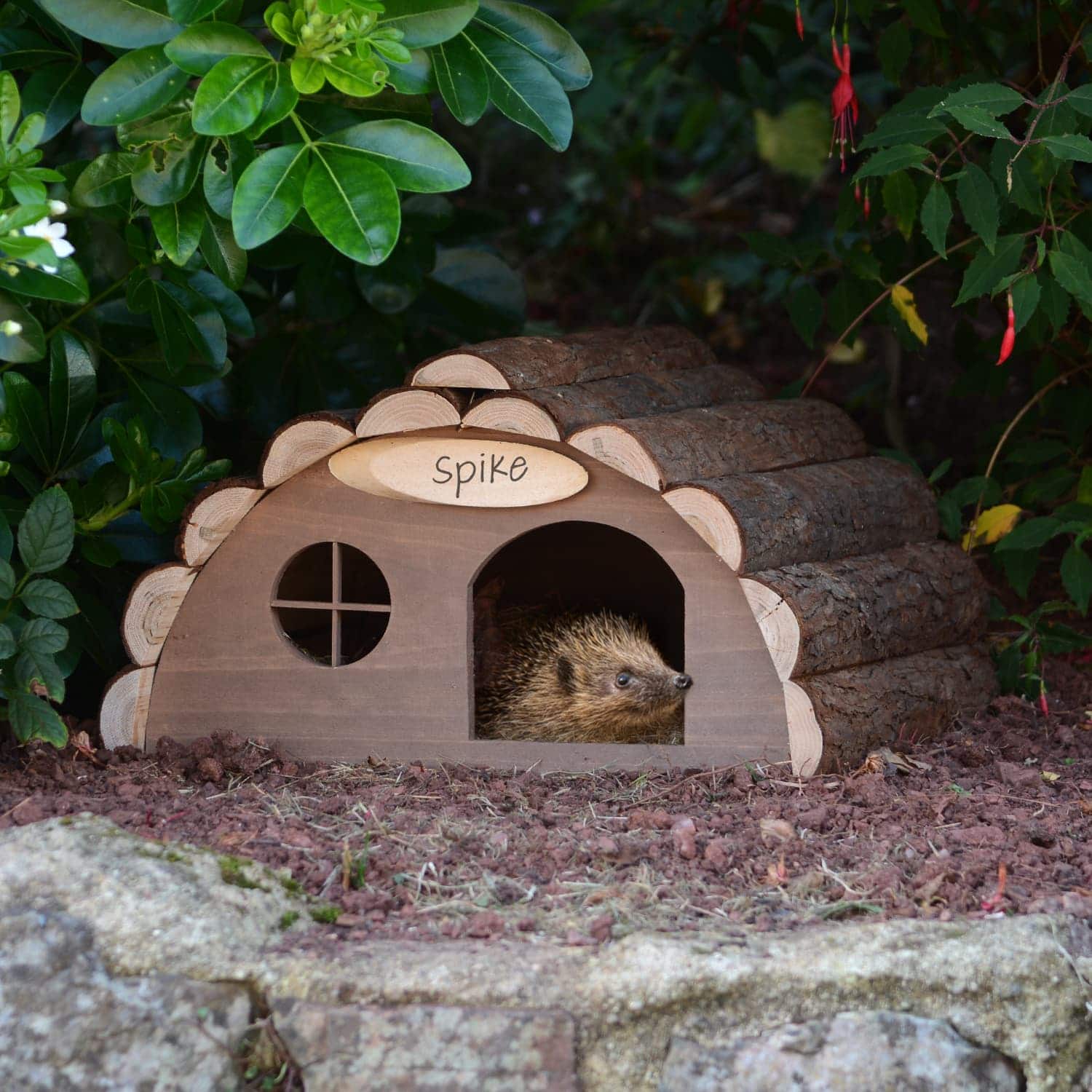What Makes a Hedgehog’s Home Sweet Home
A hedgehog’s habitat in the wild is a complex and dynamic environment that provides the necessary resources for survival. The essential elements of a hedgehog’s habitat include food availability, shelter, and water sources. These factors are crucial in determining the overall well-being and survival of hedgehogs. In the wild, hedgehogs can be found in a variety of habitats, including forests, grasslands, and deserts.
Food availability is a critical component of a hedgehog’s habitat. Hedgehogs are primarily insectivores, and their diet consists of a variety of invertebrates, such as insects, worms, and snails. They also consume fruits, vegetation, and small vertebrates. The availability of food sources in a hedgehog’s habitat is essential for their survival, as it provides the necessary energy and nutrients for growth and maintenance.
Shelter is another vital element of a hedgehog’s habitat. Hedgehogs need shelter to protect themselves from harsh weather conditions, predators, and human activities. They use a variety of shelters, including natural formations such as rock crevices, hollow logs, and burrows. In addition, hedgehogs also create their own shelters by digging burrows or using existing ones.
Water sources are also essential in a hedgehog’s habitat. Hedgehogs need access to water for drinking, bathing, and thermoregulation. They can be found in areas with permanent water sources, such as rivers, lakes, and ponds, as well as in areas with temporary water sources, such as puddles and dew.
Understanding the essential elements of a hedgehog’s habitat is crucial for conservation efforts. By identifying the key components of a hedgehog’s habitat, conservationists can develop effective strategies to protect and restore habitats, ultimately ensuring the long-term survival of hedgehog populations.
In the wild, hedgehogs can be found in a variety of habitats, including forests, grasslands, and deserts. Each of these habitats provides a unique set of challenges and opportunities for hedgehogs. For example, forests provide a abundance of food sources, but also pose a risk of predation and habitat fragmentation. Grasslands, on the other hand, provide a more open environment, but also expose hedgehogs to harsh weather conditions.
By understanding the complexities of a hedgehog’s habitat in the wild, we can better appreciate the importance of conservation efforts. By protecting and restoring habitats, we can ensure the long-term survival of hedgehog populations and maintain the health of ecosystems.
How to Identify a Hedgehog’s Natural Habitat
Identifying a hedgehog’s natural habitat in the wild requires a keen eye for detail and an understanding of the characteristics that define their environment. Hedgehogs can be found in a variety of habitats, including forests, grasslands, and deserts, each with its unique set of features.
One of the key characteristics of a hedgehog’s habitat is the type of vegetation present. Hedgehogs tend to prefer areas with dense undergrowth, such as shrubs, bushes, and tall grasses, which provide them with shelter and protection from predators. In forests, hedgehogs can be found in areas with dense leaf litter and undergrowth, while in grasslands, they tend to prefer areas with tall grasses and wildflowers.
Terrain is another important factor in identifying a hedgehog’s habitat. Hedgehogs tend to prefer areas with gentle slopes and flat terrain, which allow them to move easily and forage for food. In areas with rocky or hilly terrain, hedgehogs may be more likely to be found in areas with crevices and burrows, which provide them with shelter and protection.
Climate is also an important factor in identifying a hedgehog’s habitat. Hedgehogs tend to prefer areas with mild temperatures and moderate humidity, which allow them to regulate their body temperature and conserve energy. In areas with extreme temperatures or humidity, hedgehogs may be more likely to be found in areas with sheltered microclimates, such as under rocks or in burrows.
Some examples of different types of habitats that hedgehogs can be found in include:
- Forests: Hedgehogs can be found in deciduous and coniferous forests, where they tend to prefer areas with dense undergrowth and leaf litter.
- Grasslands: Hedgehogs can be found in grasslands and meadows, where they tend to prefer areas with tall grasses and wildflowers.
- Deserts: Hedgehogs can be found in deserts and arid regions, where they tend to prefer areas with rocky outcrops and scrubby vegetation.
By understanding the characteristics of a hedgehog’s habitat in the wild, we can better appreciate the importance of conservation efforts and take steps to protect and restore these critical environments.
The Importance of Vegetation in a Hedgehog’s Habitat
Vegetation plays a crucial role in a hedgehog’s habitat, providing food, shelter, and protection from predators. In the wild, hedgehogs can be found in areas with dense undergrowth, including shrubs, bushes, and tall grasses. These plants provide hedgehogs with a source of food, including fruits, leaves, and insects, as well as shelter from harsh weather conditions and predators.
Some of the most common types of plants found in hedgehog habitats include:
- Shrubs: Hedgehogs tend to prefer areas with dense shrubs, such as blackthorn, hawthorn, and rose, which provide them with food and shelter.
- Bushes: Bushes, such as gorse and bramble, provide hedgehogs with a source of food and shelter, as well as protection from predators.
- Tall grasses: Tall grasses, such as wheat and oats, provide hedgehogs with a source of food and shelter, as well as a place to hide from predators.
Human activities, such as deforestation and urbanization, can have a significant impact on hedgehog habitats. The destruction of natural habitats can lead to a loss of food sources, shelter, and protection from predators, making it difficult for hedgehogs to survive.
Deforestation, in particular, can have a devastating impact on hedgehog habitats. The removal of trees and other vegetation can lead to a loss of food sources, shelter, and protection from predators, making it difficult for hedgehogs to survive. Additionally, deforestation can lead to soil erosion, which can make it difficult for hedgehogs to dig burrows and find shelter.
Urbanization can also have a significant impact on hedgehog habitats. The development of urban areas can lead to the destruction of natural habitats, making it difficult for hedgehogs to find food, shelter, and protection from predators. Additionally, urbanization can lead to the fragmentation of habitats, making it difficult for hedgehogs to move through the landscape and find suitable habitats.
It is essential to protect and restore hedgehog habitats to ensure the long-term survival of these animals. This can be achieved through conservation efforts, such as habitat restoration and wildlife corridors, as well as community engagement and education.
Water Sources: A Vital Component of a Hedgehog’s Habitat
Access to water sources is a crucial component of a hedgehog’s habitat in the wild. Hedgehogs need water for drinking, bathing, and thermoregulation, and they can be found in areas with permanent water sources, such as rivers, lakes, and ponds, as well as in areas with temporary water sources, such as puddles and dew.
Hedgehogs use water for a variety of purposes, including:
- Drinking: Hedgehogs need access to clean drinking water to stay hydrated and maintain their bodily functions.
- Bathing: Hedgehogs use water to bathe and clean themselves, which helps to remove dirt and debris from their fur and skin.
- Thermoregulation: Hedgehogs use water to regulate their body temperature, which is especially important in hot weather.
Human activities, such as pollution and water scarcity, can have a significant impact on hedgehog habitats. Pollution can contaminate water sources, making them undrinkable for hedgehogs, while water scarcity can reduce the availability of water sources, making it difficult for hedgehogs to survive.
Some examples of how human activities can impact hedgehog habitats include:
- Pollution: Chemical pollutants, such as pesticides and heavy metals, can contaminate water sources, making them undrinkable for hedgehogs.
- Water scarcity: Human activities, such as over-extraction of groundwater and construction of dams, can reduce the availability of water sources, making it difficult for hedgehogs to survive.
It is essential to protect and restore hedgehog habitats to ensure the long-term survival of these animals. This can be achieved through conservation efforts, such as habitat restoration and wildlife corridors, as well as community engagement and education.
By understanding the importance of water sources in a hedgehog’s habitat, we can take steps to protect and conserve these vital resources. This includes reducing pollution, conserving water, and creating hedgehog-friendly habitats that provide access to clean drinking water and suitable bathing areas.
Shelter and Denning: A Hedgehog’s Home Away from Home
Hedgehogs require shelter and denning sites to protect themselves from harsh weather conditions, predators, and human activities. In the wild, hedgehogs use a variety of natural formations, such as rock crevices, hollow logs, and burrows, as shelters and dens.
Some of the most common types of shelters and dens used by hedgehogs include:
- Rock crevices: Hedgehogs often use rock crevices as shelters and dens, as they provide protection from predators and harsh weather conditions.
- Hollow logs: Hollow logs are another common type of shelter and den used by hedgehogs, as they provide a cozy and protected space.
- Burrows: Hedgehogs also use burrows as shelters and dens, which they often dig themselves or take over from other animals.
Human activities, such as habitat destruction and fragmentation, can impact hedgehog shelter options. The destruction of natural habitats can lead to a loss of shelter and denning sites, making it difficult for hedgehogs to survive.
Some examples of how human activities can impact hedgehog shelter options include:
- Habitat destruction: The destruction of natural habitats, such as forests and grasslands, can lead to a loss of shelter and denning sites for hedgehogs.
- Habitat fragmentation: The fragmentation of habitats, such as the creation of roads and urban areas, can make it difficult for hedgehogs to move through the landscape and find suitable shelter and denning sites.
It is essential to protect and restore hedgehog habitats to ensure the long-term survival of these animals. This can be achieved through conservation efforts, such as habitat restoration and wildlife corridors, as well as community engagement and education.
By understanding the importance of shelter and denning sites in a hedgehog’s habitat, we can take steps to protect and conserve these vital resources. This includes creating hedgehog-friendly habitats that provide access to natural formations, such as rock crevices and hollow logs, and reducing human activities that impact hedgehog shelter options.
Climate and Weather: How Hedgehogs Adapt to Their Environment
Hedgehogs are adapted to living in a variety of climates and weather conditions, and they have developed several strategies to cope with the challenges of their environment. In the wild, hedgehogs can be found in a range of habitats, from tropical forests to temperate grasslands, and they are able to adapt to different temperature regimes, humidity levels, and weather patterns.
One of the key ways that hedgehogs adapt to their environment is through temperature regulation. Hedgehogs are able to regulate their body temperature by adjusting their behavior, such as seeking shade or shelter, and by using their fur and skin to insulate themselves. They are also able to hibernate during periods of extreme cold or heat, which helps to conserve energy and protect themselves from harsh weather conditions.
Hedgehogs also adapt to their environment through behavioral changes. For example, during periods of drought, hedgehogs may change their activity patterns to avoid the heat of the day and seek out food and water sources at night. They may also adjust their diet to include more drought-tolerant plants and insects.
Human activities, such as climate change, can impact hedgehog habitats and populations. Climate change can alter the distribution and abundance of food resources, change the timing of seasonal events, and increase the frequency and severity of extreme weather events. This can make it difficult for hedgehogs to adapt and survive in their environment.
Some examples of how climate change can impact hedgehog habitats and populations include:
- Changes in food availability: Climate change can alter the distribution and abundance of food resources, making it difficult for hedgehogs to find enough to eat.
- Changes in seasonal events: Climate change can change the timing of seasonal events, such as the timing of plant flowering and insect emergence, which can make it difficult for hedgehogs to adapt.
- Increased frequency and severity of extreme weather events: Climate change can increase the frequency and severity of extreme weather events, such as heatwaves and droughts, which can make it difficult for hedgehogs to survive.
It is essential to protect and restore hedgehog habitats to ensure the long-term survival of these animals. This can be achieved through conservation efforts, such as habitat restoration and wildlife corridors, as well as community engagement and education.
By understanding how hedgehogs adapt to their environment, we can take steps to protect and conserve these amazing animals. This includes reducing our carbon footprint, conserving water, and creating hedgehog-friendly habitats that provide the resources and shelter that they need to survive.
Conservation Efforts: Protecting Hedgehog Habitats for the Future
Conservation efforts are essential for protecting hedgehog habitats and ensuring the long-term survival of these amazing animals. Habitat restoration, wildlife corridors, and community engagement are just a few examples of the many ways that individuals and organizations can get involved in hedgehog conservation.
Habitat restoration is a critical component of hedgehog conservation. This involves restoring degraded or damaged habitats to their natural state, which can help to provide hedgehogs with the food, shelter, and water sources they need to survive. Habitat restoration can be achieved through a variety of methods, including the reintroduction of native plant species, the creation of wildlife-friendly habitats, and the removal of invasive species.
Wildlife corridors are another important conservation tool. These corridors provide hedgehogs with a safe and protected route to move through the landscape, which can help to connect isolated populations and promote genetic diversity. Wildlife corridors can be created through the restoration of natural habitats, the creation of artificial corridors, and the protection of existing corridors.
Community engagement is also essential for hedgehog conservation. This involves working with local communities to raise awareness about the importance of hedgehog conservation and to promote action. Community engagement can be achieved through a variety of methods, including education and outreach programs, community events, and volunteer opportunities.
Some examples of successful conservation initiatives include:
- The Hedgehog Conservation Society: This organization works to protect hedgehog habitats and promote conservation efforts through education and outreach programs.
- The Wildlife Trusts: This organization works to protect and restore natural habitats, including those that are important for hedgehogs.
- The RSPCA: This organization works to protect animals, including hedgehogs, from cruelty and neglect.
Individuals can also get involved in hedgehog conservation by taking action in their own communities. This can include creating hedgehog-friendly gardens, supporting local conservation efforts, and spreading awareness about the importance of hedgehog conservation.
By working together, we can make a difference and help to protect hedgehog habitats for the future.
Creating a Hedgehog-Friendly Garden: Tips and Tricks
Creating a hedgehog-friendly garden is a great way to support these amazing animals and promote biodiversity in your community. By providing a safe and welcoming environment, you can help to protect hedgehog habitats and ensure the long-term survival of these incredible creatures.
Here are some tips and tricks for creating a hedgehog-friendly garden:
- Plant selection: Choose plants that are native to your area and that provide food and shelter for hedgehogs. Some examples of hedgehog-friendly plants include lavender, rosemary, and thyme.
- Habitat creation: Create a hedgehog-friendly habitat by providing a mix of open spaces and sheltered areas. This can include creating a rock pile or a log pile, or by leaving some areas of the garden untidy.
- Wildlife-friendly practices: Avoid using pesticides and herbicides in your garden, as these can harm hedgehogs and other wildlife. Instead, use natural methods to control pests and weeds.
Some examples of hedgehog-friendly gardens include:
- Wildflower gardens: Planting a wildflower garden is a great way to provide a source of food and shelter for hedgehogs.
- Rock gardens: Creating a rock garden is a great way to provide a sheltered area for hedgehogs to rest and hide.
- Log piles: Creating a log pile is a great way to provide a source of food and shelter for hedgehogs.
By creating a hedgehog-friendly garden, you can help to protect these amazing animals and promote biodiversity in your community. Remember to always follow best practices for wildlife conservation and to avoid harming hedgehogs or other wildlife.
Take action today and create a hedgehog-friendly garden in your community. Together, we can make a difference and help to protect these incredible creatures.









